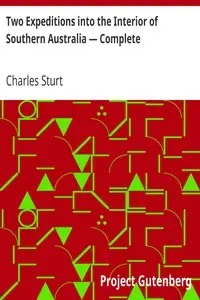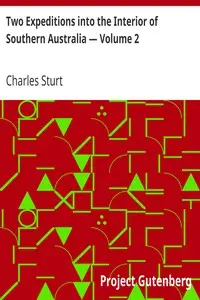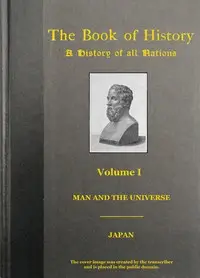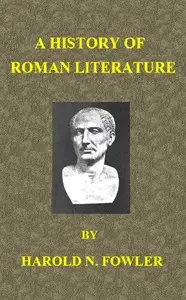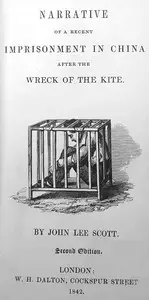"Two Expeditions into the Interior of Southern Australia — Volume I" by Charles Sturt is a historical narrative that recounts Sturt's 19th-century journeys across the raw, untamed heart of Australia, capturing the environmental conditions and physical challenges facing the British colony of New South Wales. Sturt's expeditions began with ambitious goals: to unravel the mysteries of Australia's unexplored interior and correct the misunderstandings surrounding its capacity to support life. As he navigates the treacherous Macquarie River, Sturt records both the environmental conditions and the challenges of the early settlers along with the initial challenges of planning journeys in the unknown lands.
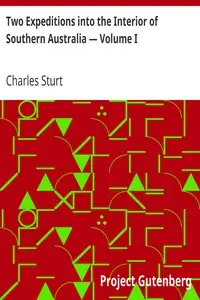
Two Expeditions into the Interior of Southern Australia — Volume I
By Charles Sturt
Embark on a journey with a 19th-century explorer as he battles a challenging drought and environmental barriers to reveal the secrets of uncharted Australia and the daily challenges of the locals during his expeditions.
Summary
About the AuthorCharles Napier Sturt was a British officer and explorer of Australia, and part of the European exploration of Australia. He led several expeditions into the interior of the continent, starting from Sydney and later from Adelaide. His expeditions traced several of the westward-flowing rivers, establishing that they all merged into the Murray River, which flows into the Southern Ocean. He was searching to prove his own passionately held belief that an "inland sea" was located at the centre of the continent. He reached the rank of Captain, served in several appointed posts, and on the Legislative Council.
Charles Napier Sturt was a British officer and explorer of Australia, and part of the European exploration of Australia. He led several expeditions into the interior of the continent, starting from Sydney and later from Adelaide. His expeditions traced several of the westward-flowing rivers, establishing that they all merged into the Murray River, which flows into the Southern Ocean. He was searching to prove his own passionately held belief that an "inland sea" was located at the centre of the continent. He reached the rank of Captain, served in several appointed posts, and on the Legislative Council.

